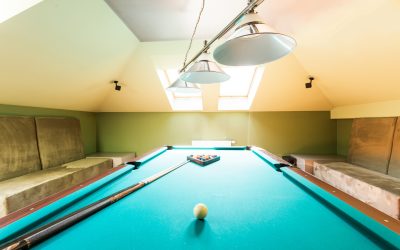
Maintaining your pool table might seem like a daunting task, but with a few simple tips, you can ensure it stays in prime condition for years to come. A smooth, true roll doesn’t happen by accident—it’s the result of regular care and attention to detail. Whether you’re an amateur enthusiast or a seasoned player, proper pool table maintenance not only enhances your game by preserving its precision and consistency but also protects your investment. With the right approach, you can extend the life of the cloth, slate, and wood, guaranteeing that your table remains a centrepiece for entertainment and competition. Let’s explore practical, easy-to-follow steps that will keep your pool table in top-notch shape.
Pool Table Cleaning: A Weekly Routine
Brushing the Cloth
To maintain the condition of the cloth, it’s essential to brush it regularly. Use a soft pool table brush and ensure that you sweep in straight lines from head to foot. Avoid using circular motions, as they can cause uneven wear or damage to the felt. Brushing should be done after each session or at least weekly, depending on how frequently the table is used.
Vacuuming (Optional)
Vacuuming can be an optional step to keep the felt clean, but it must be done carefully. Use a low-suction handheld vacuum equipped with a soft or brush attachment. Avoid snagging or stretching the felt, as this can damage the surface.
Cleaning the Balls
Pool balls should be wiped down after every game to remove chalk residue and dirt. For a deeper clean, wash them using mild soap or a ball cleaner, then dry them thoroughly to avoid water spots. If you’re using an Aramith ball set, it’s recommended to use Aramith cleaner for optimal results.
Cleaning the Pockets
For the table’s pockets, use a soft brush or a handheld vacuum to remove debris gently. Leather pockets can be wiped down with a damp cloth, and mild soap can be used if necessary. Periodically applying a leather conditioner can help maintain their appearance and durability.
Wiping Down Wood Surfaces
The wooden components of the pool table, such as the rails and frame, should be dusted regularly with a microfiber cloth. Use a non-abrasive polish to maintain their finish, but avoid harsh sprays or saturating the wood with liquid, as this can cause damage.
Billiard Table Care: Everyday Protection
Using a Pool Table Cover
When the pool table is not in use, it is essential to protect it with a fitted cover. This prevents the buildup of dust, shields the surface from harmful UV rays, and guards against spills and pet hair. A quality pool table cover is a simple yet effective way to preserve the table’s appearance and extend its lifespan.
Controlling the Environment
Maintaining a stable environment is key to the longevity of your billiard table. Keep the temperature and humidity levels consistent, as fluctuations can warp the wood or damage the cloth. During damp months, use a dehumidifier to remove excess moisture. Additionally, avoid placing the table near vents, open windows, or direct sunlight. Curtains or UV film can also be used to reduce exposure to harmful rays.
Setting House Rules
To ensure your pool table stays in top condition, establish a clear set of house rules. Strictly prohibit food and drinks on or near the rails, as well as smoking in the vicinity. Discourage sitting or leaning on the table, which can strain the frame or damage the surface. Always avoid performing jump shots and cue chalking directly over the cloth, as these can lead to unnecessary wear, dust, and tears.

Pool Table Maintenance Checks: Monthly to Quarterly
Monthly to Quarterly Maintenance Checklist
1. Check Table Level
Place a carpenter’s level on multiple spots across the table to ensure it remains perfectly level. Adjust the leg levellers as necessary, or use shims to achieve proper alignment. This step is particularly important after moving the table or if it is placed on softer flooring, as these can impact the level over time.
2. Cue Care and Storage
To maintain cue longevity, store cues vertically in a dedicated rack or cue case. Keep cues away from extreme heat or cold, as warping can occur. Regularly clean the shafts to remove grime and keep them smooth. Additionally, refresh cue tips periodically to ensure proper playability and avoid accidental damage to the cloth surface.
3. Hardware Inspection
Perform routine inspections of the table’s hardware components. Check and tighten bolts, rail fasteners, and pocket liners to maintain stability and safety. Ensure cushion rails remain tight and responsive to deliver consistent gameplay. Address any loose or worn hardware promptly to prevent long-term damage.
When to Call a Professional
Annual or as-needed servicing is essential to ensure your pool table remains in top condition. This includes tasks like re-levelling the table, replacing the cloth, fixing cushion issues, and addressing any slate shifts or cracks that might occur over time. Be on the lookout for warning signs such as balls drifting or rolling inconsistently, loose rails or pockets, torn felt, or cushions that have lost their bounce, as these can indicate the need for professional attention.
Additionally, during periodic re-felting, take the opportunity to perform a deep cleaning of the slate. Use a slightly damp cloth to wipe the slate surface and ensure it is fully dry before applying the new cloth to maintain optimal playability.


